How to Walk Through Provence
Plus the perfect spring wine, Portugal's Independence, + more
On the fourth day of walking through Provence, up 3,000 feet of elevation with a backpack and sack of wine and books I had picked up along the way, climbing over boulders on a not very well marked trail, sweating in 90-degree heat, I wondered why I had agreed to this trip. Not even agreed––suggested. Begged for. Convinced Nathan that this was what we should do for a honeymoon. Not stay in some luxury hotel in Paris or Bora Bora, but walk. Trek through the Luberon mountains as if the highway wasn’t somewhere below us and car rental didn’t exist.
But there is something to be said about approaching an ancient city on foot. You see it from a distance, propped up there on a hill, make your way slowly toward it past trees and wildflowers, the trail changing from dirt to cobblestones, the smell of cedar in the air, and before you realize it you’re cresting the last small hill and arriving in the town square, surrounded by Medieval buildings. It takes longer than it seems it should from afar, then you’re in the middle of it all at once. And the satisfaction! Never has a fresh squeezed lemonade or a glass of rosé felt more deserved.
France has an extensive walking trail network called the Grand Randonnée. It covers 37,000 miles across the country. I first heard of the Grand Randonnee in an old Elizabeth Gilbert GQ article. We didn’t follow her exact route, but used it as inspiration. (If you do want to use the exact route, note that many restaurants and B&Bs she mentions are now closed).
Walking through Provence is the perfect early summer or fall trip. I would avoid the heat of mid-late summer. Basics are below, but please feel free to reach out with questions if you find yourself wandering through the Luberon mountains anytime soon.
Avignon
Start with a few days in Avignon, a lovely city that was once the seat of the pope.
Van Gogh, Picasso and Cezanne all raved about the light near Avignon. Surprise surprise, the sky was picture perfect and golden hour was divine.
Eat: lunch at Alice & Ses Merveilles. Pumpkin soup topped with toast and hummus, foie gras, duck with figs, chocolate cake with grapefruit compote. Yum. The owner, Stephanie, was thrilled to be open after a year of the pandemic and gushed about local wine. Not hard to gush, when the local wine is Chateuneuf du Pape, one of the most renowned wine regions in the world.
Do: Visit Palais des Papes
Drink: at Tapis Rouge, a wine bar with an extensive by the glass selection. The owner pulled out maps and gave us a French wine lesson.
Visit: Les Halles market, where you can buy pastries and cheese and wine.
In the market, dine at the small seafood restaurant, where you should definitely follow the advice in the post below (the best lunch!).
Now, let the walk commence!
Day 1: Take the train from Avignon to L’Isle sur-la-sorgue (about 40 minutes).
Walk through L’Isle sur-la-sorgue and on to Fontaine De Vaucluse. This was the easiest walking day, about five miles on mostly flat roads. Fontaine de Vaucluse is a tiny but cute town, known for wellness tourism.
Eat: We got pizza from a street cart. Note that many of these towns shut down by 8pm.
Day 2: On to Gordes!
The walk here was harder, about eight miles, up narrow, stone paths as we moved higher into the Vaucluse mountains, and with a final killer hill as we approached the town. It was beautiful though, perched high on a hill, flanked with vineyards and dotted with cypress trees, and those formidable, yellow stone walls it looked like we’d never reach. And the final stretch through the cedar trees smelled wonderful.
Stop: for lunch at Le Vieux Bistrot in Cabrières-d’Avignon, about halfway through the walk. Who doesn’t love a plate of heavy cheeses and meats with a carafe of wine before tackling the worst of the day’s walk?
Stay: At Mas de la Beaume.
Day 3: Walk through the Luberon to Roussillon
Before leaving Gordes, stop at La Boulangerie de Mamie Jane to get a sandwich. You’ll be thankful later.
Today’s walk (six or seven miles) took us up and down, up and down, through pastures, along gravel roads, past horses and through vineyards.
Stop: At Domain Tara, where I had the best sweet red wine of my life and was heartbroken to find they only sell on premise. Get a bottle of wine to eat with your sandwich. Find a spot just off the path. Read a book. Relax. Nap.
Arrive in Roussillon, known as one of France’s most beautiful villages because of large ochre deposits.
Stay: This hotel is right in the center of the city.
Eat: At David Restaurant in the hotel, or at Le Piquebaure for panoramic views over the mountains. Note that Roussillon is full of very nice restaurants and attracts an older crowd. We were the youngest tourists by far, and people thought we were crazy for wanting an after dinner drink at 8:30pm. Not a single thing was open.
Day 4 - Roussillon to Saint Saturnin Les Apt
Before you leave Roussillon make sure to visit the ochre trail and park, and grab breakfast at any of the local bakeries.
This was the hardest day by far. It was a little over six miles, with an elevation of 3,000 feet. It doesn’t sound like a lot, but when you're carrying a backpack and numerous books you’ve picked up along the way…and numerous bottles of wine (ok this is totally my own fault) it can be very tiring. It also had the least well-marked path and required a bit of scrambling. But the town is the definition of French charm and totally worth the trek.
Eat: At the Hotel St-Hubert restaurant
You can stay in Saint Saturnin Les Apt if you’re good at planning ahead. We are not. There was no room at the inn(s) so we moved on to Apt. I’m ashamed to say we did not walk the five miles, which you definitely could - it’s mostly flat - and instead took the bus. (Thank you to the woman we met at the corner store/bar who suggested this!)
Stay: At Le Couvent, a convent turned inn.
Day 5: Apt
Apt is underrated. People say it’s boring, or not as cute as smaller towns in Provence. It might not be as cute, but there is much more to do.
Visit: the sprawling, giant weekend market. Buy blankets, olive oil soap (so much soap), clothing and much more. And of course food.
Eat: If you’re craving something lighter than French food, or with a bit of spice, as we were, eat at L’Intramuros. This father-son operated Thai restaurant has great food, a fun vibe, and an extensive and interesting French rum list.
Day 6: Bike!
We kept Apt as our base but spent a day biking to wineries near Bonnieux.
Rent: Bikes from Bee’s Station bike rental.
Day 7: Give in
And on the seventh day, we caved. We planned to walk to Menerbes, and from there take a bus back to Avignon.
But it was pouring rain and our ponchos weren’t cutting it, so we took a bus back directly and spent one more night in Avignon. By all means, walk that last day and let me know what it was like!
Watch this reel of all the changing terrain!! And see more of the trip here.
Things to know:
The GR trails are either well marked or not marked at all.
Buy the IGV paper maps for your specific route in Avignon before you set out.
We walked about 5-6 miles a day. This isn’t a lot and wouldn’t have been hard if I didn’t acquire wine and books. Don’t do that.
Remember that a lot of things in France close in the middle of the day, so bring a snack or plan ahead if you want to stop for lunch.
If you don’t like foie gras, Provence might not the place for you.
What I packed:
Patagonia romper (lifesaver all-in-one clothing item perfect for hiking or lunch)
Workout leggings, sports bra, tank top, t-shirt
Allbirds, because I thought they were cute enough to wear in town and functional enough to walk
Black dress to wear to all dinners
Sandals for dinner/exploring when not hiking
Simple daytime dress in case
Sweater
Notebook
Picnic bag (this is where we ended up storing the books and wine. Love that it has a small zipper pocket and two wine pockets.)
Wine of the Week
White Châteauneuf du Pape. You might know the Châteauneuf du Pape Grenache-based blends of the Southern Rhone, famous for being the oldest appellation in France and for its incredible wines.
But did you know white Châteauneuf du Pape also exists? It can be made with Grenache Blanc, Clairette, and Roussanne and only makes up about 5% of production. Ask for it at your local wine shop!
History + Wine
April 25th is Freedom Day in Portugal, commemorating The Carnation Revolution of April 25, 1974, when the army turned against its dictator. Putting red carnations into their rifle barrels, they took to the streets in peaceful protest, soon joined by the public. The Estado Novo fell and democracy at last came to Portugal. Meanwhile in the Douro Valley – which was barely accessible at that time – bud break and flowering were underway; the grapes continued their growth trajectory and the fall brought an excellent harvest.
Kopke, established in 1638, is the oldest Port Wine house. Portuguese owned rather than British, they focus on tawny styles and have unmatched offerings of Colheitas (essentially vintage tawnies).
I’ll be sipping a Kopke port this weekend and toasting Portugal’s successful fight for freedom.
Now Back to Southern France
A special Q&A with Marianne Fabre-Lanvin, co-founder of Soleil Wines. I love these summery, Mediterranean wines. Find them at Verve in Chicago.
When did you first fall in love with wine?
Wine has always been part of my life. Since the 19th century, my family had vineyards, a cellar, and in the house you could find all sorts of ancient viticultural artifacts. My brother and I grew up frolicking in the vineyards, eating grapes (our favorite were the sweet muscat grapes), foraging herbs, almonds, wild veggies like asparagus, and fruit such as grapes, blackberries, and figs. My grandfather was a doctor, and he loved the chemistry of winemaking. He especially loved to make his own fortified wine with Grenache grapes. My mother is a pharmacist, and she wrote her thesis on oenology.
What inspired you to start your own project.
I was born into the world of wine, but it was only later in life that I decided to work in the wine industry, putting my knowledge and basic skills to good use in the communications field: promoting wineries, wine regions, and their culture. In New York, I was fortunate to direct Sud de France, an organization designed to create awareness of wines from the Languedoc-Roussillon. Five years ago, I founded MFL & Co., a New York-based communications agency that specializes in wine and travel. In 2021, my childhood friend Thomas Delaude and I started making our own organic wine — a longtime dream. I love this hands-on project. Life came full circle.
Where do your grapes come from? Do you partner with a winemaker in the area? Where is the wine made?
The grapes come from southern France, within sight of the Mediterranean Sea, but they are bottled in the Beaujolais. We partner with a winemaker who has been a pioneer in organic wine farming since the 80s, but we also source wine from a couple of other independent producers. As a Vin de France, we are allowed a lot of flexibility when it comes to sourcing or winemaking, but we can’t make claims of a specific provenance, even if there is one.
Tell me about your ocean projects.
We launched our company with ocean conservation in mind and it permeates our project and the partnerships we initiate. For example, we give a portion of our profits to our friend Carolina Sevilla's 5 Minute Foundation, a nonprofit that works toward ocean preservation.
We always envisioned Souleil as a way to entertain while also doing something good for — and with — our friends and communities. Recently, Souleil sponsored local beach cleanup initiatives, in which people came together to show respect and care for their natural environment.
Readers can participate in our next several events. One will take place in Porquerolles, an island of the French Riviera in France, on June 11 and 12, for example. Another one will take place in the Rockaways, New York, in September.
You’re an oyster aficionado -- what's your favorite Souleil and oyster pairing?
I do love oysters of all provenance, large and small. In New York, I would order Blue Point oysters for example. In France, I love the oysters from the Etang de Thau (a lagoon by the Mediterranean) — certainly, my favorite aperitif setting! I often serve oysters with sea snails (whelks), baguette and aioli, a perfect match with Souleil Vin de Bonté Le Blanc.
Please explain why aperitif is so important and why we should adopt it into our culture? (lol)
Ha ha ! You’ll find the French longing for that moment at the end of the day, when you unwind, when you gather with friends, colleagues or a loved one, and discuss politics, feelings, art, anything really, with a light heart. Apéritif is also your introduction to dinner. You’re teasing your taste buds and building your appetite! (Here’s ‘how to apero’ with Souleil)
I'm obsessed with your labels!
Anna Polonsky (founder of Polonsky and Friends) is one of my best friends, so I immediately thought of her food-and-beverage-focused design agency for the labels. We were drawn to images of early 20th century eau de cologne labels and the 1960s/1970s French Mediterranean vibe found in iconic films and fashion editorials from those decades. Since Souleil means “sun” in ancient French, we played off this concept, showing the sun in different settings and working with warm, earthy tones.
ALSO––I asked Marianne, who is a very chic woman and owner of a PR company in Paris and New York, if she had thoughts on Emily in Paris. And….she loves it! Binged it in two days like the rest of us. “There are some cliches, but it also has some truths,” she said. (These are the hard-hitting journalism questions I know you’re here for).
Weekend Reading
How Sulfites Became Public Enemy No. 1 In Wine
The Complete Guide to Flying Etihad Airways (by me)
The Remarkable Brain of a Carpet Cleaner Who Speaks 24 Languages (I am in awe of and intensely jealous of this man, who seems like a lovely person)
Everything you never knew you wanted to know about those old fashioned strawberry candies
Bad Future, Better Future–A Climate Change Guide for Kids (old, but reupping for all of us this Earth Day)
Four New Speakeasies to Try In Chicago (also by me! Or read it on your next United flight)
“A Year In Provence” if you haven’t read it yet!
Next newsletter: Heading to Eastern Europe to talk about wine + Ukraine.
If you enjoyed the newsletter today, please pass it to someone you know who’d enjoy it, and tap the heart icon above, helps me reach more readers. And if you take this walk, please let me know!!
–Rebecca


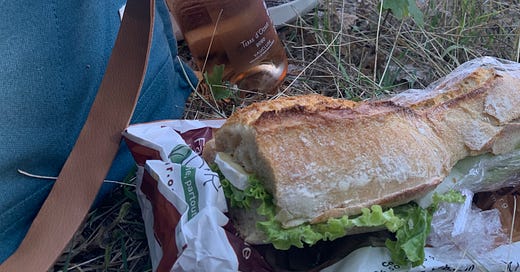


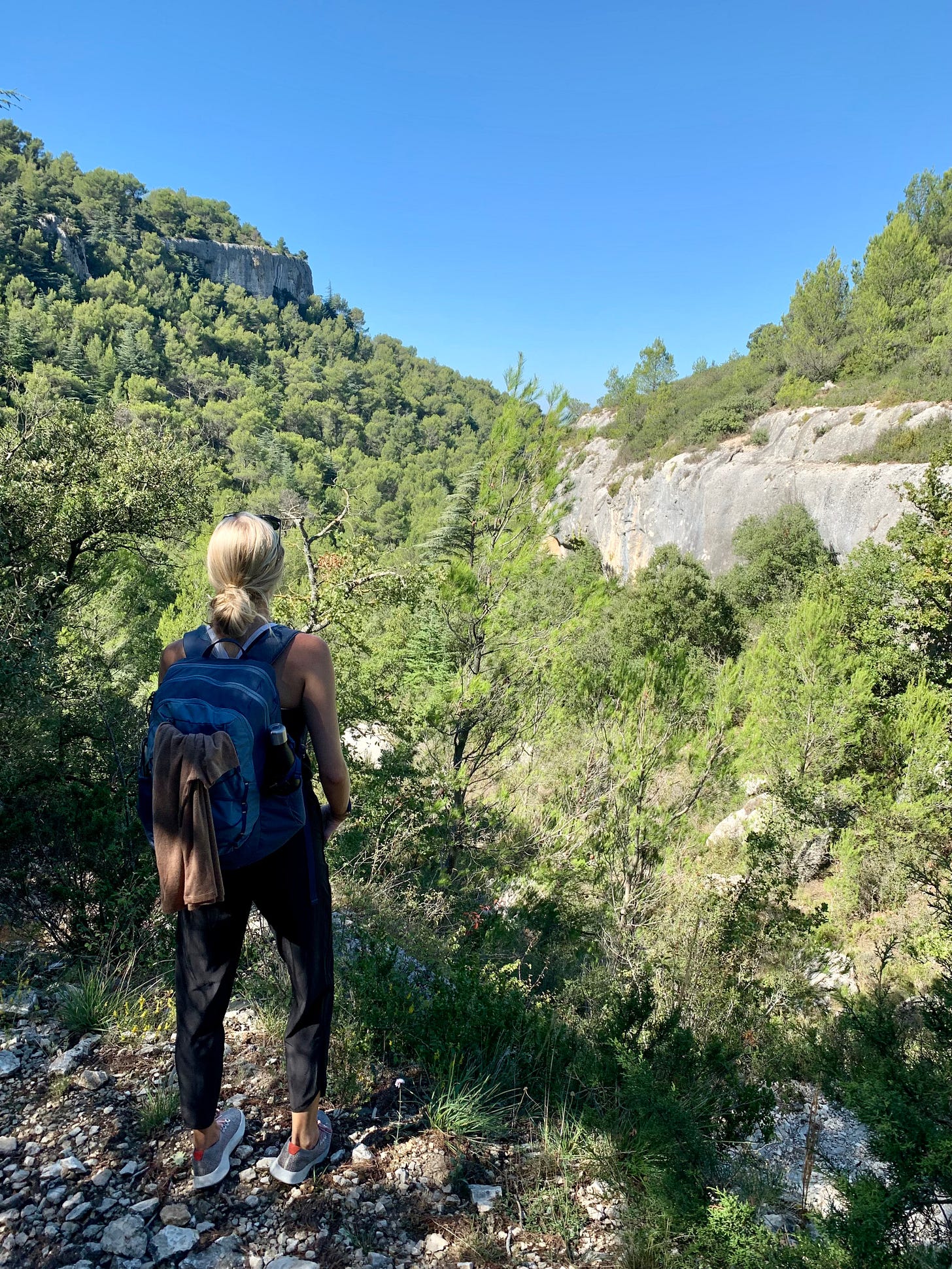


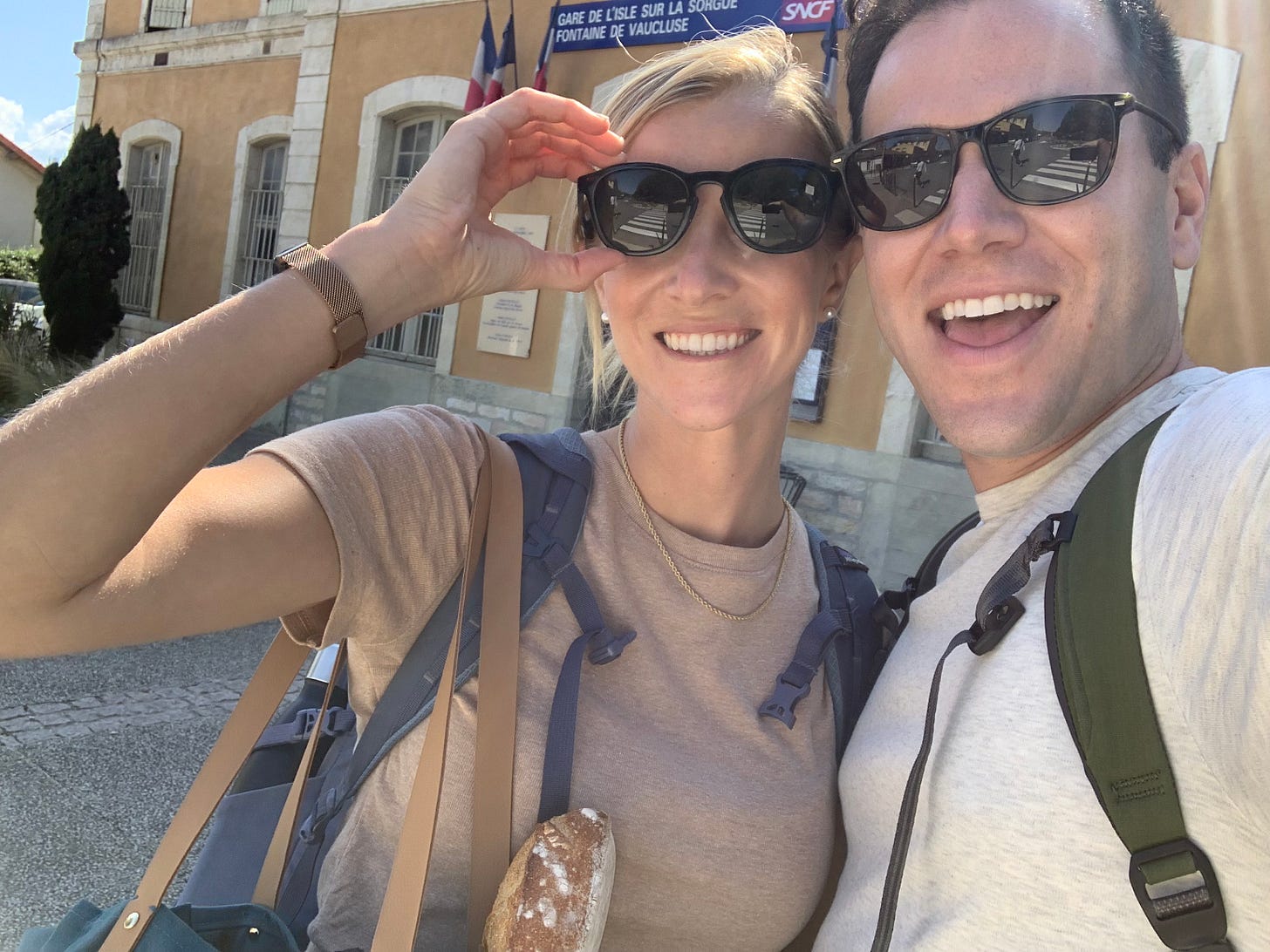

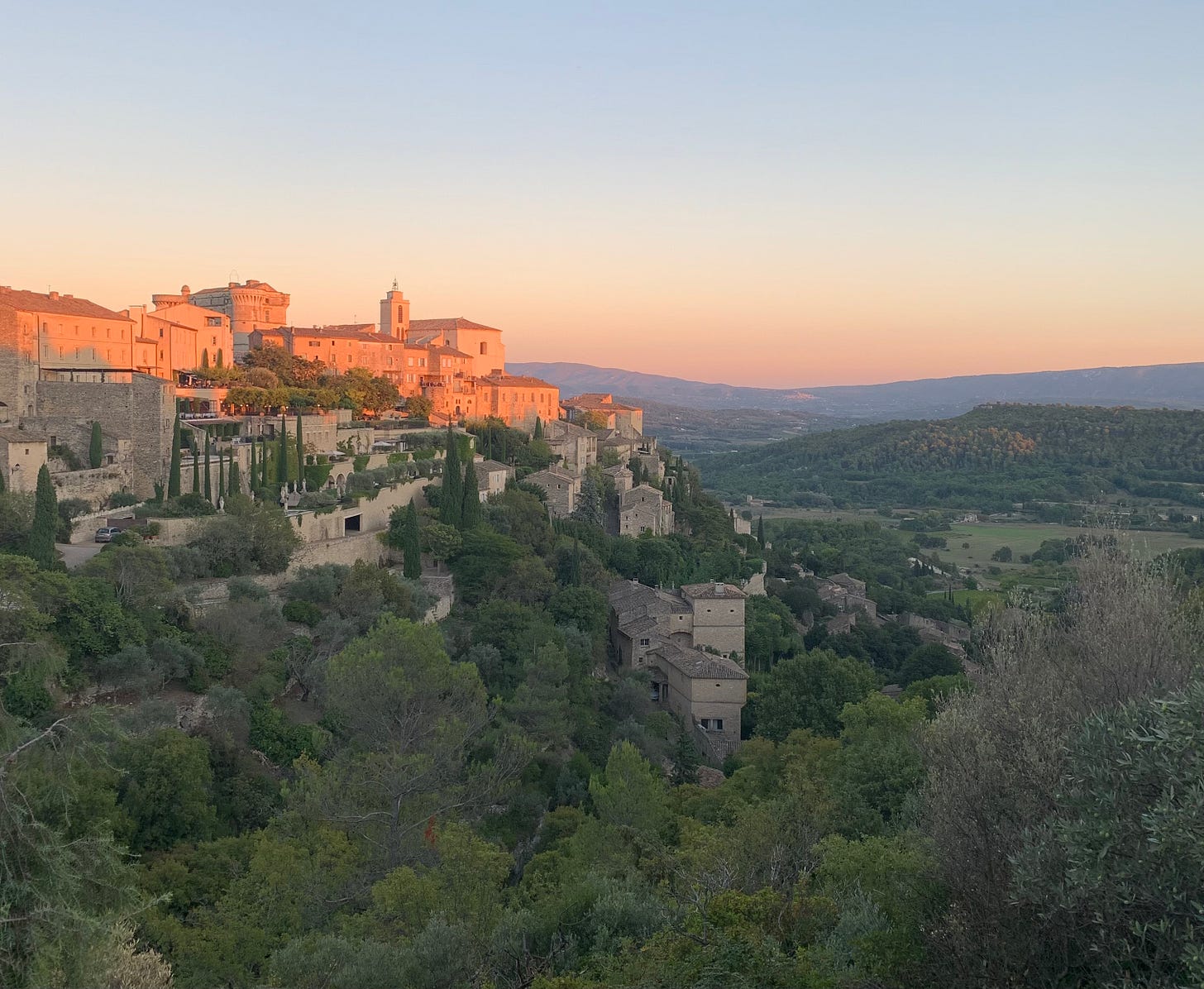
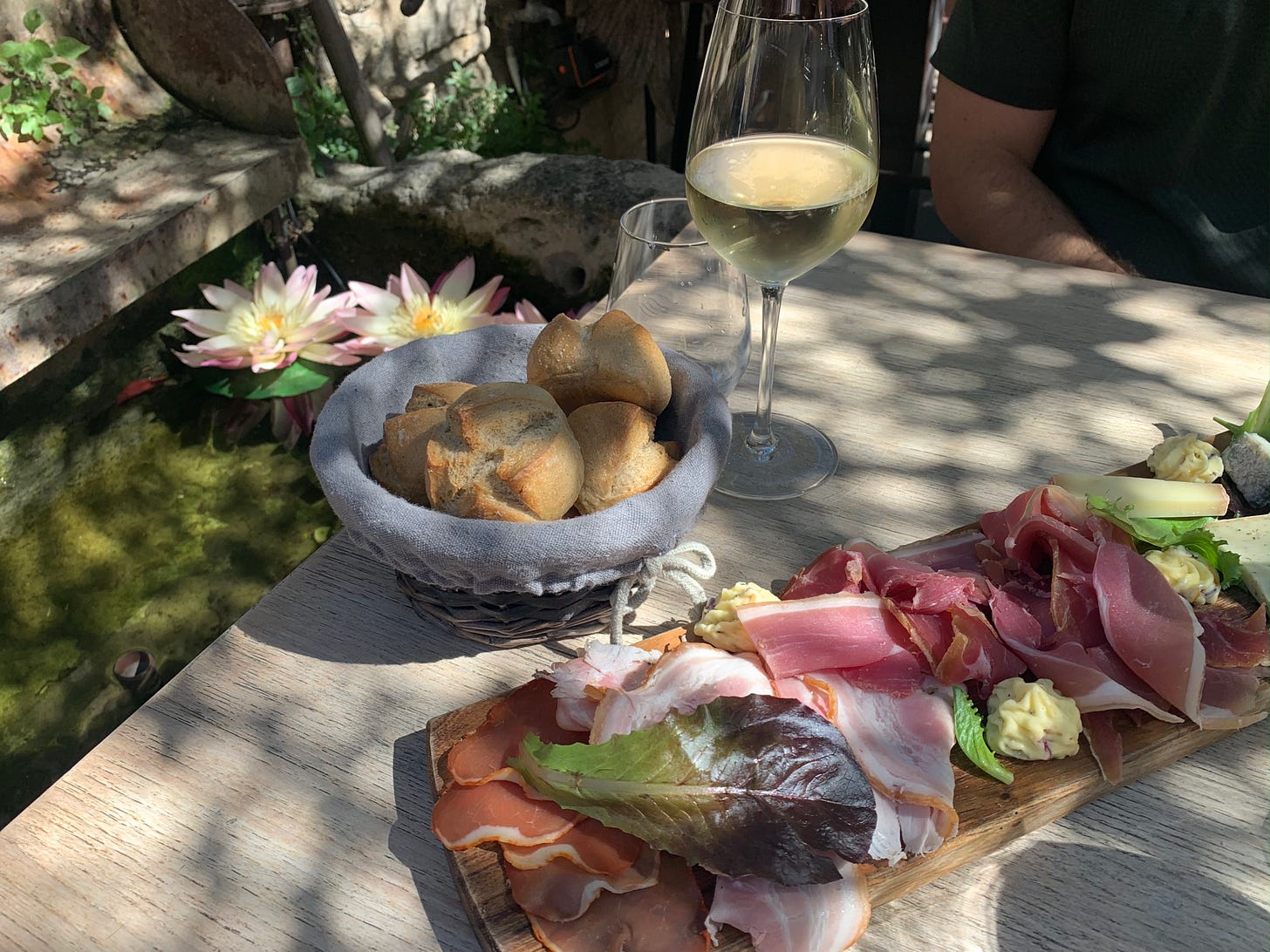

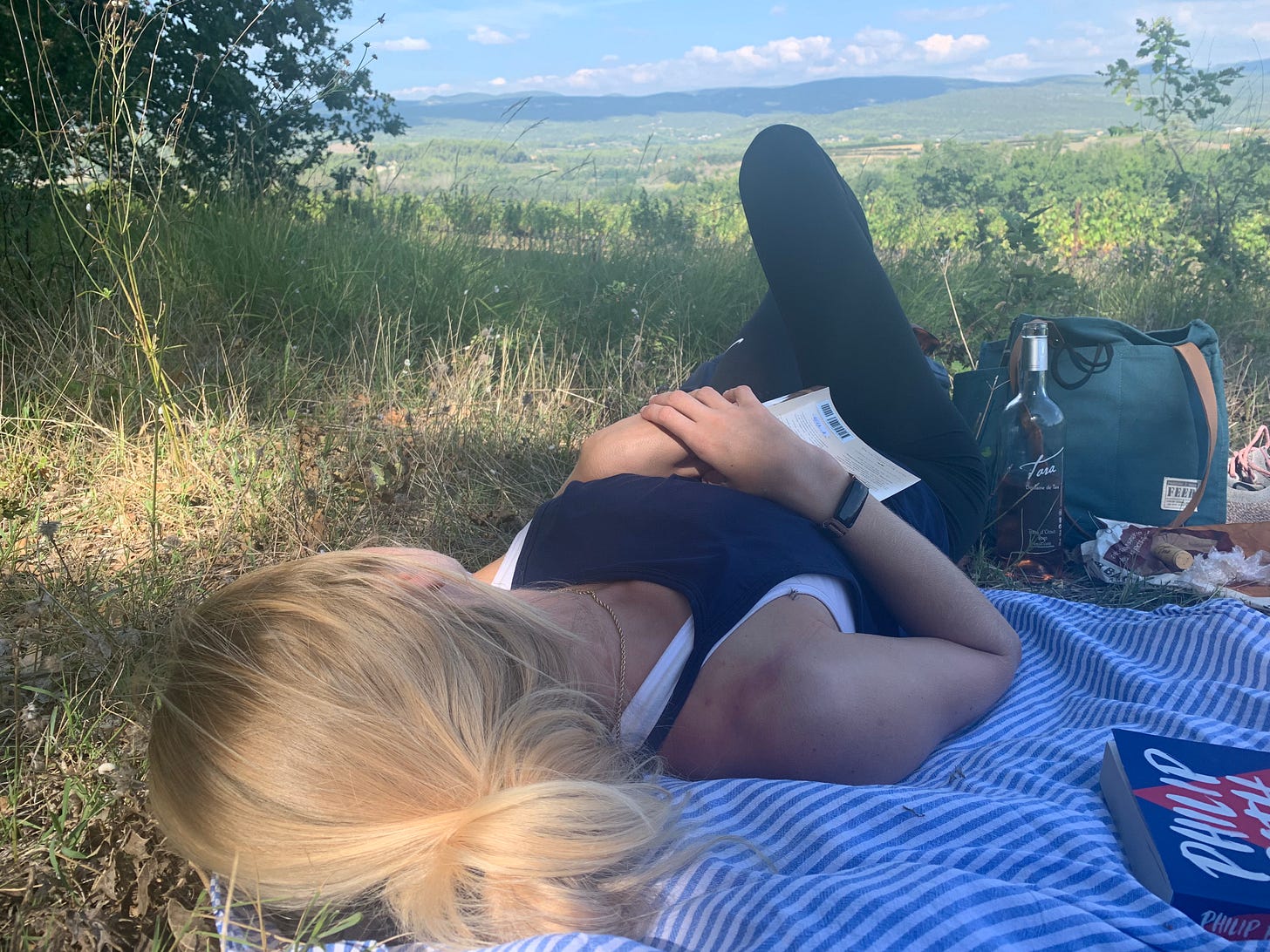
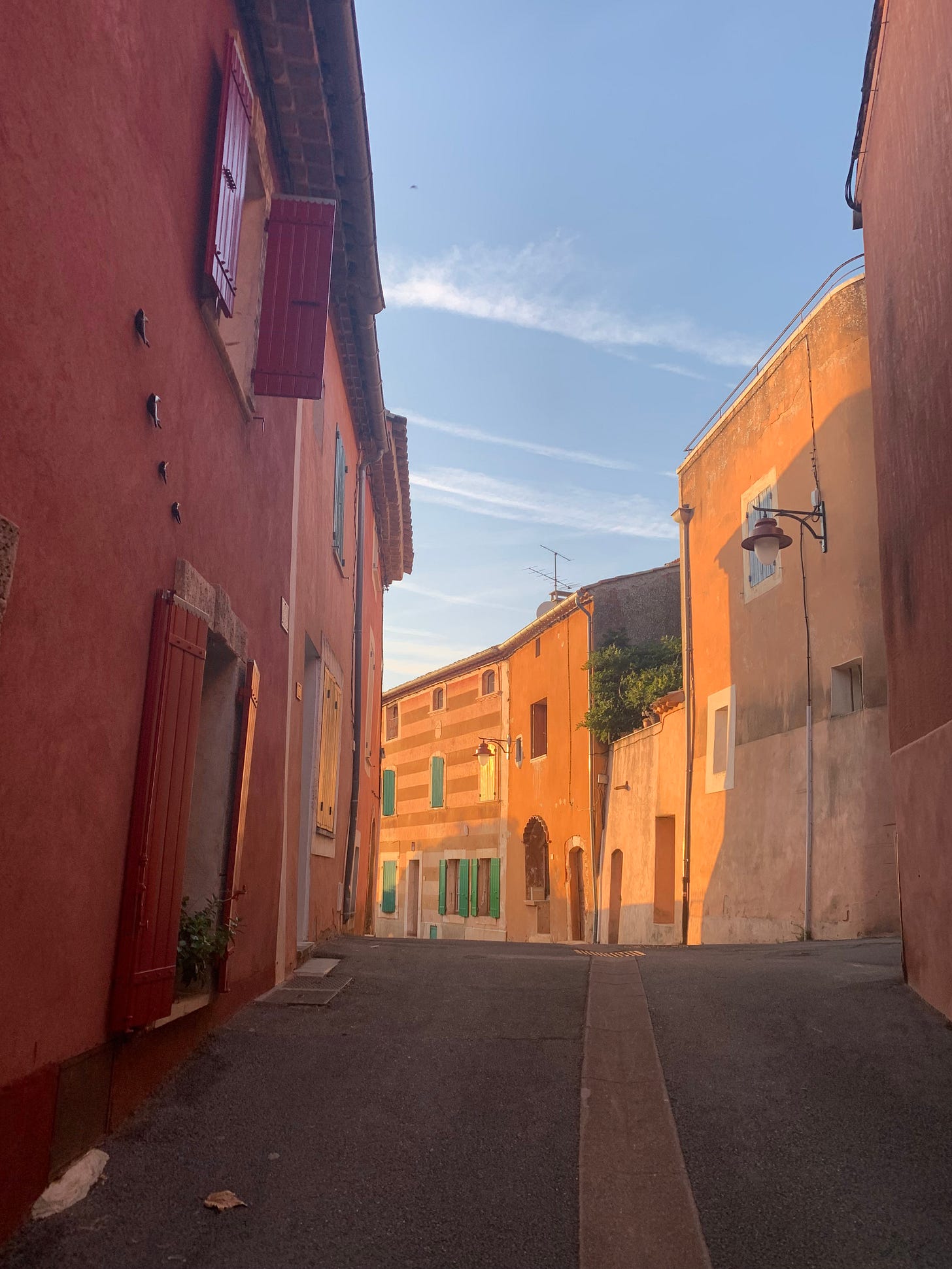
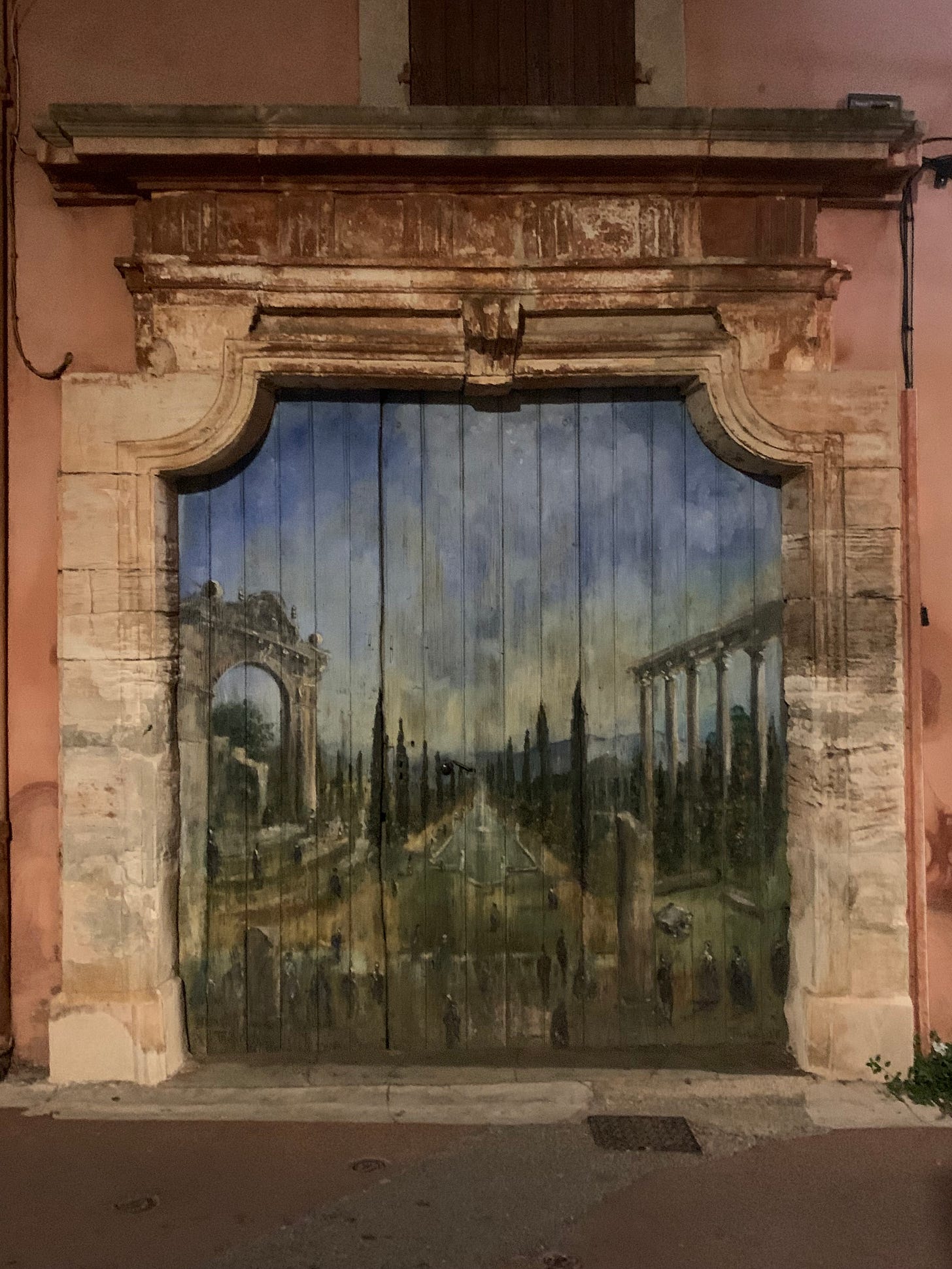
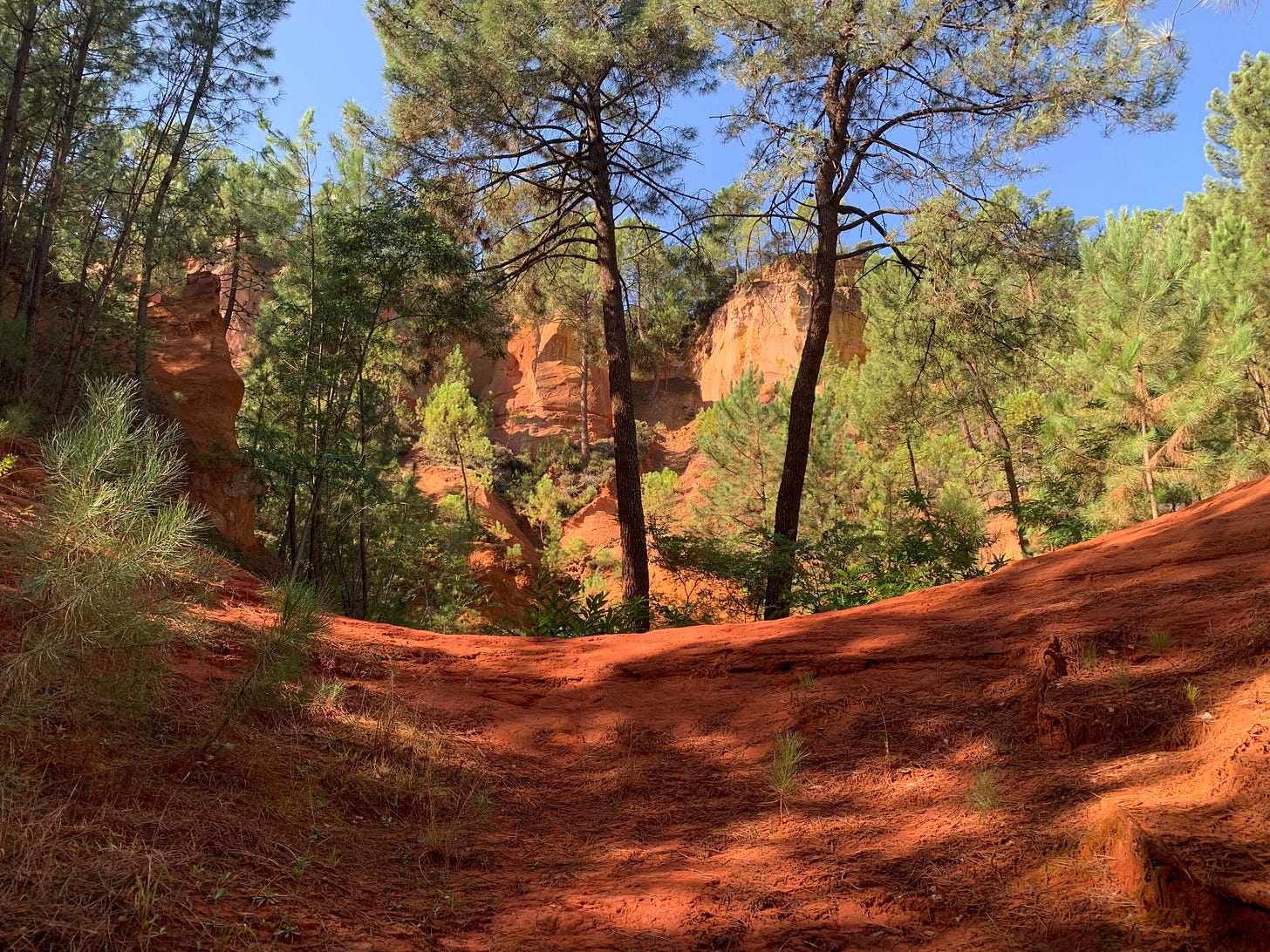
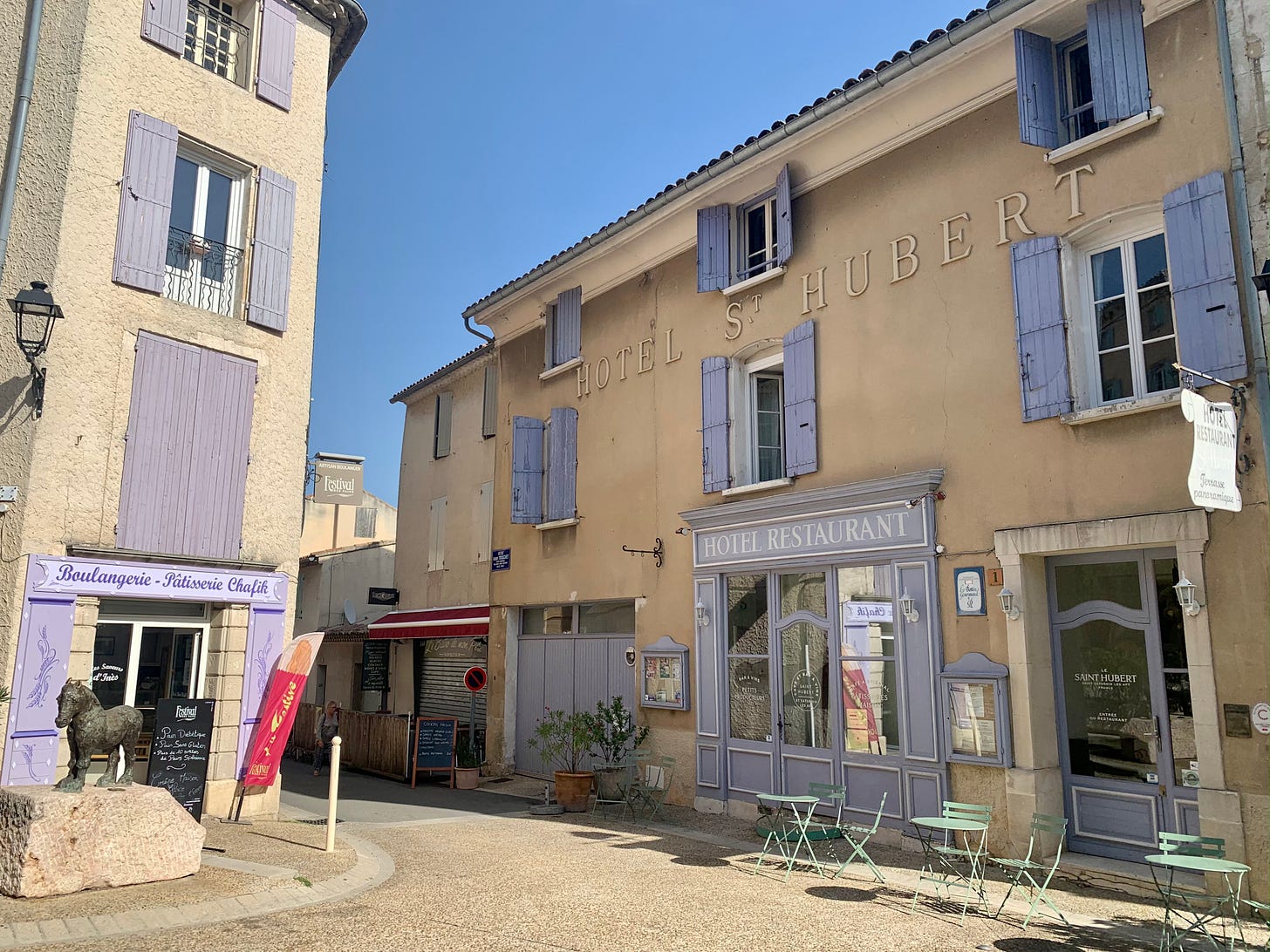
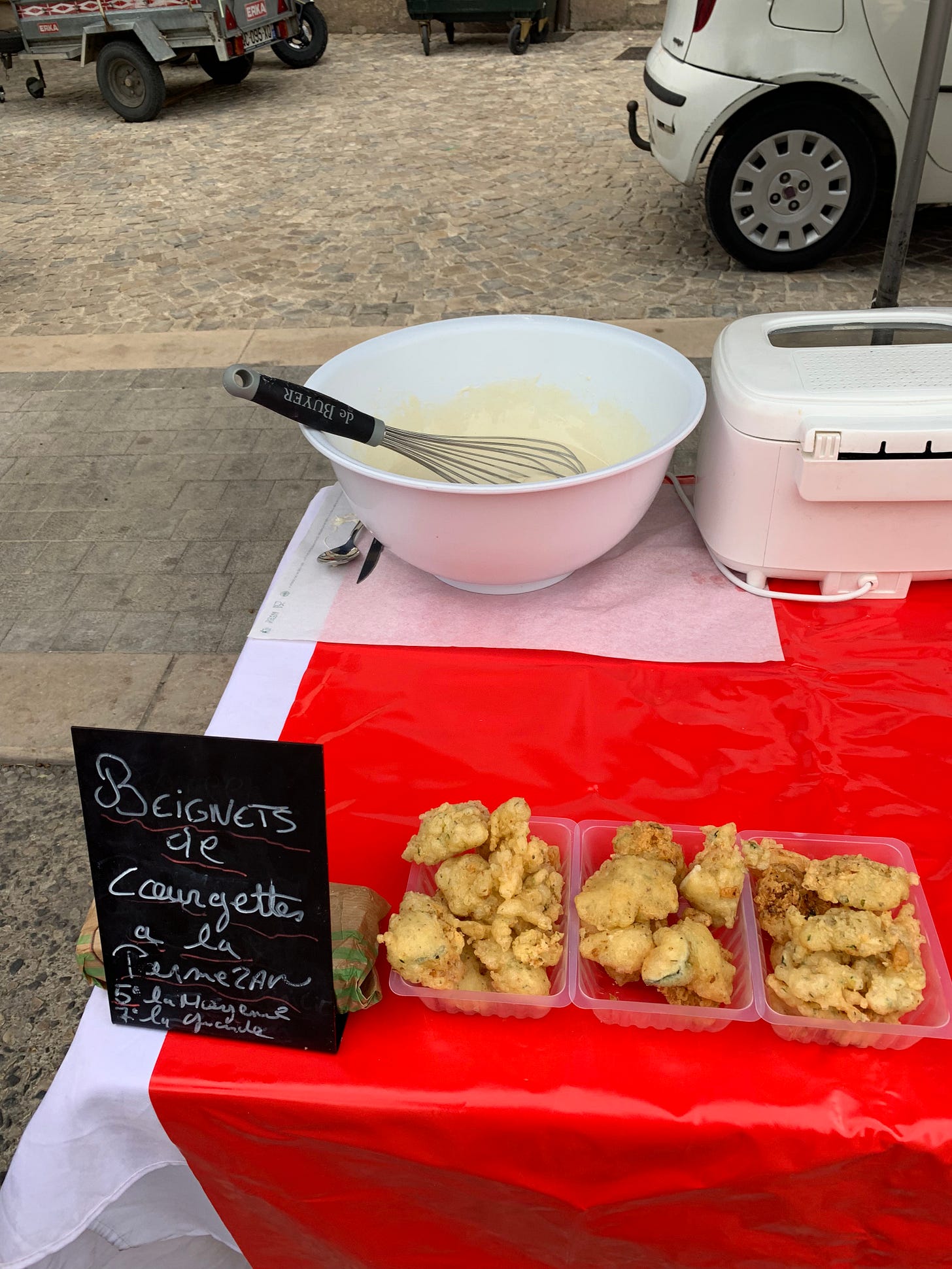
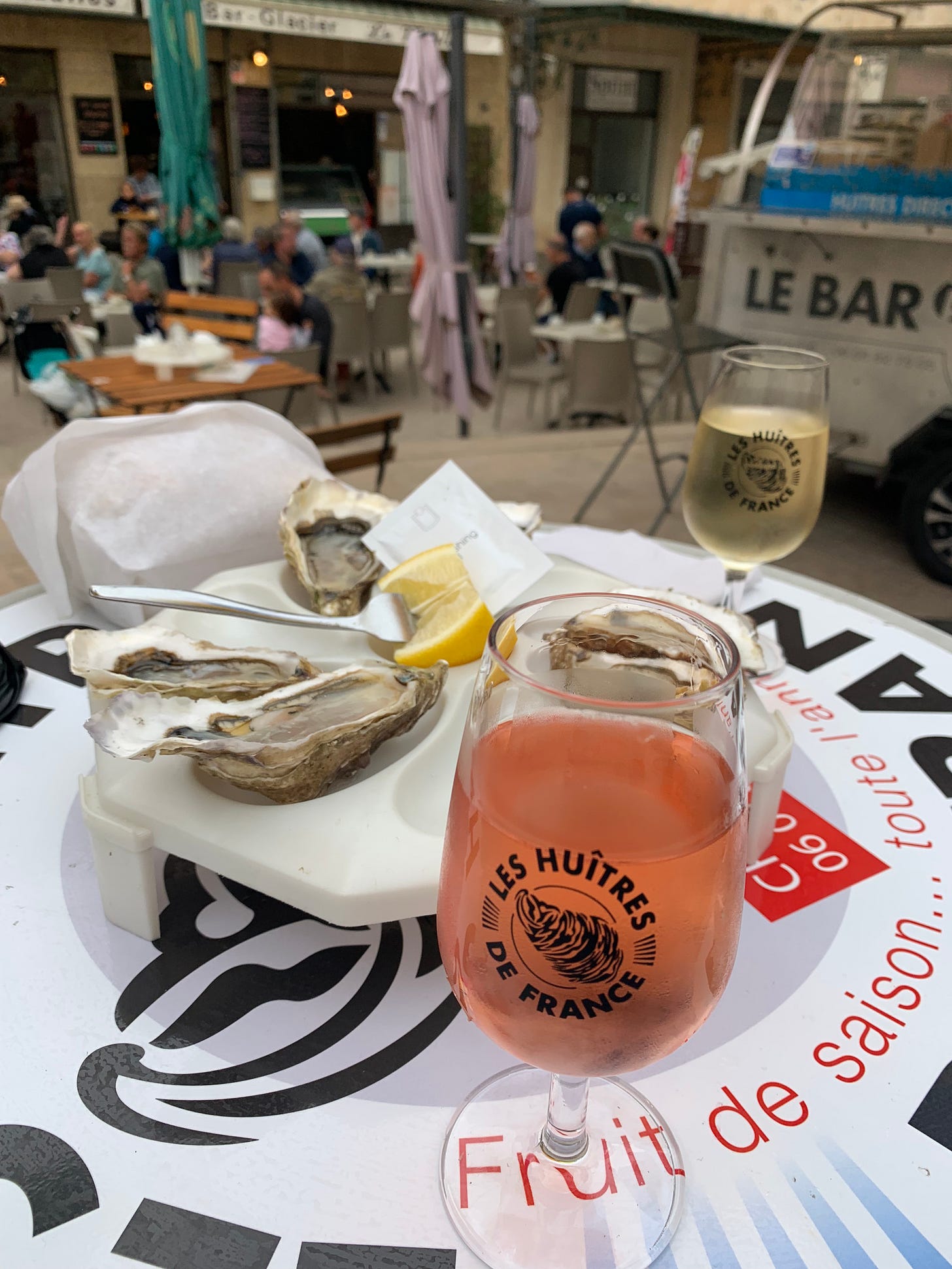
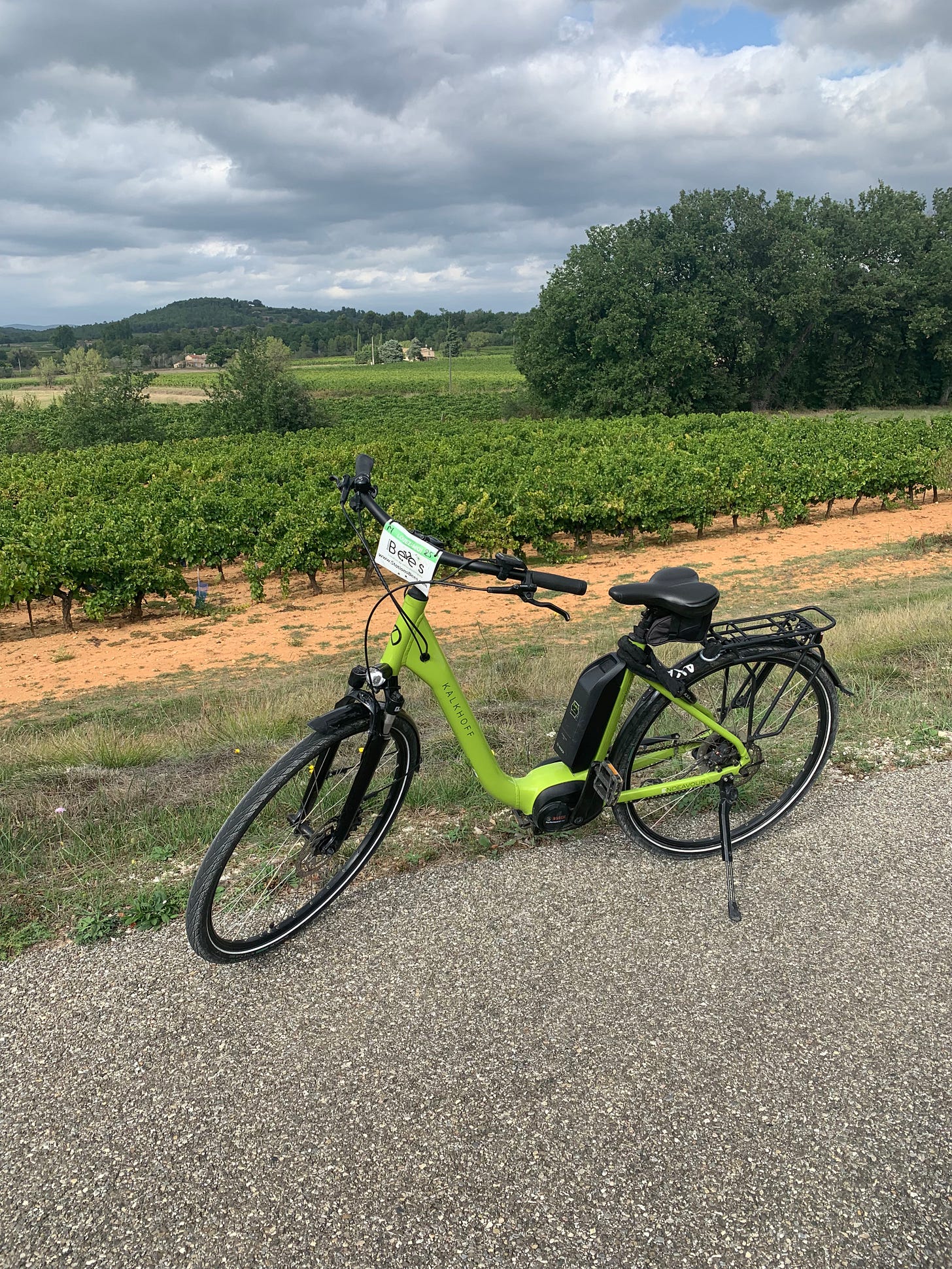
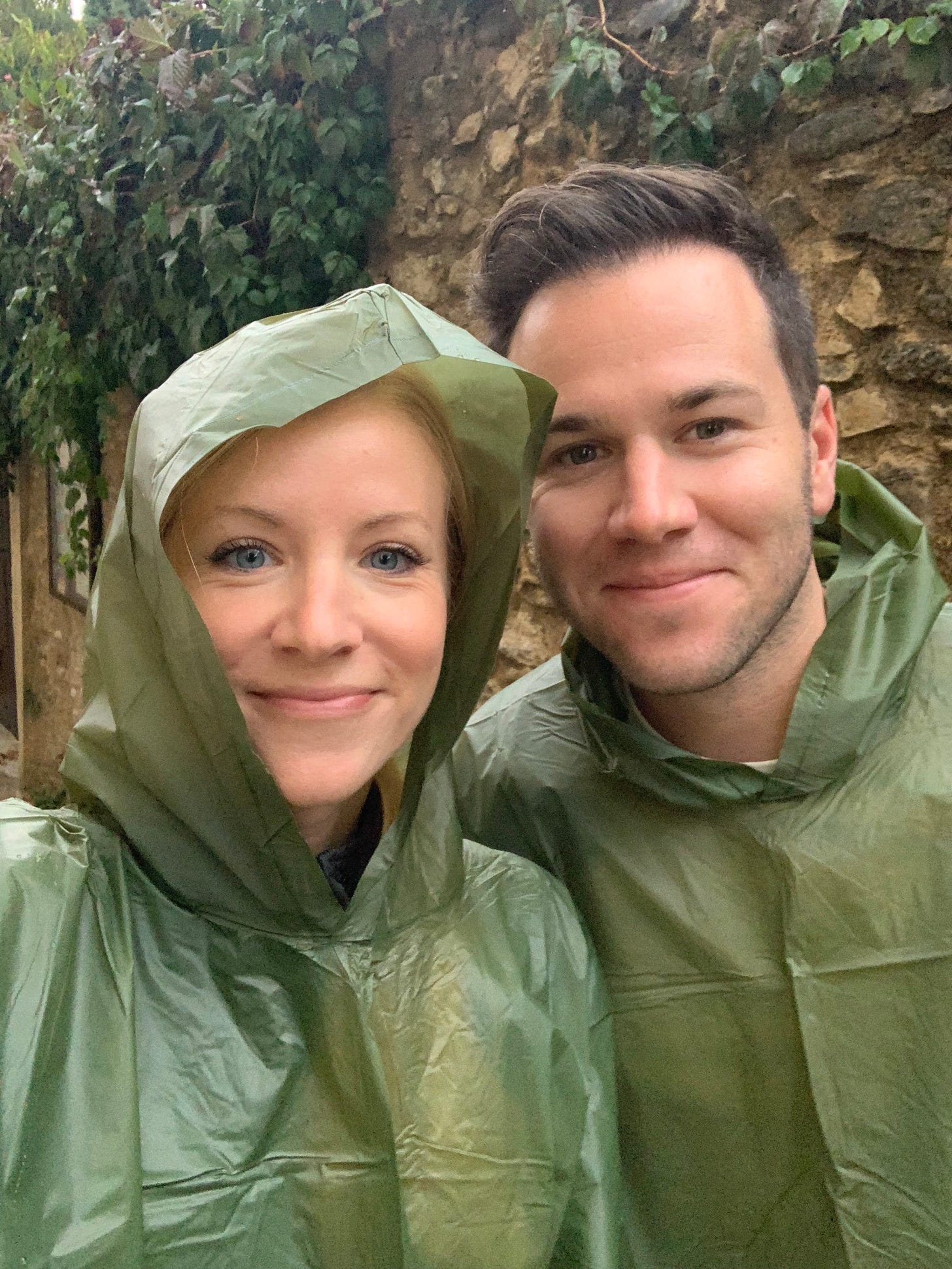
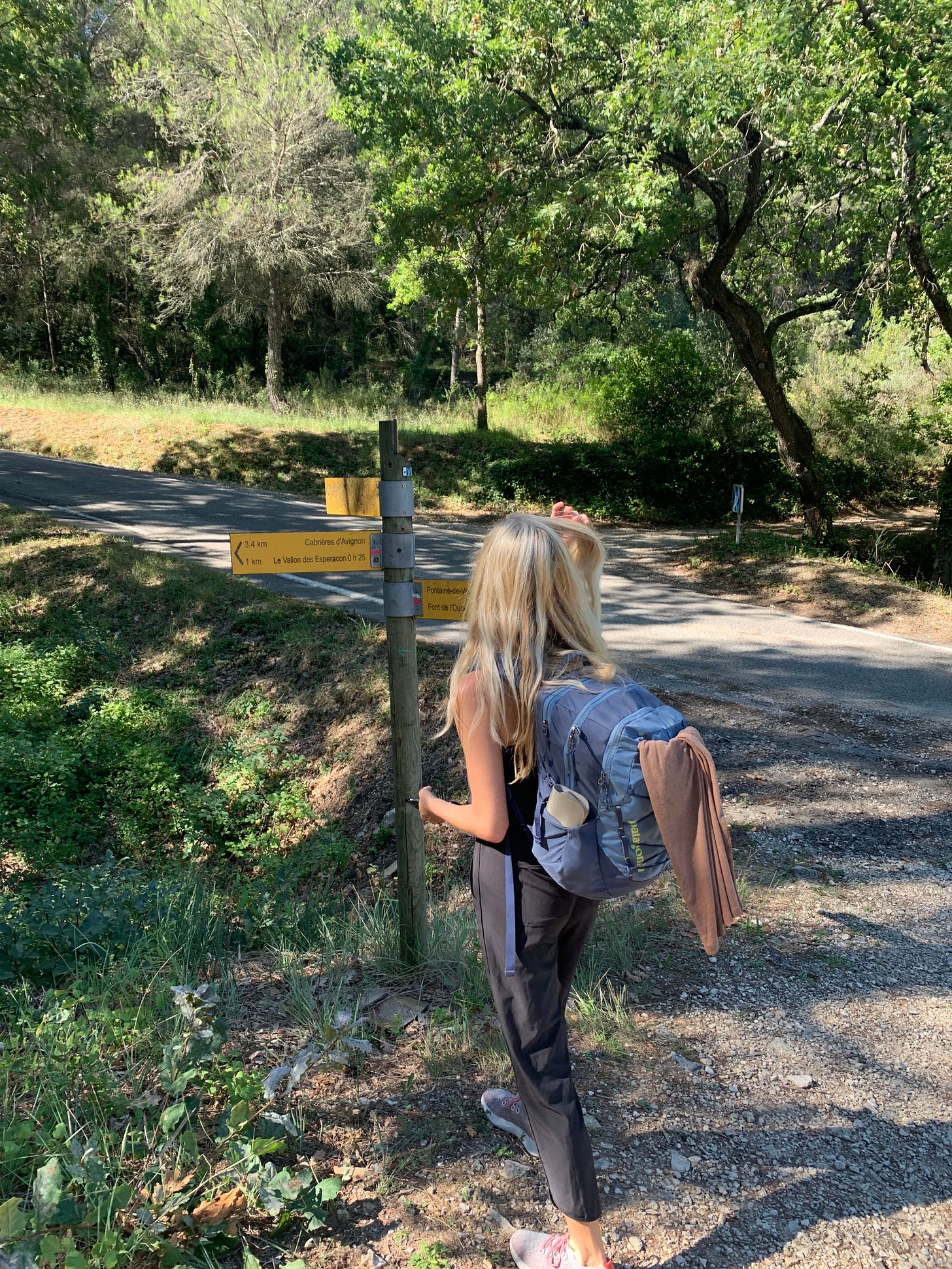
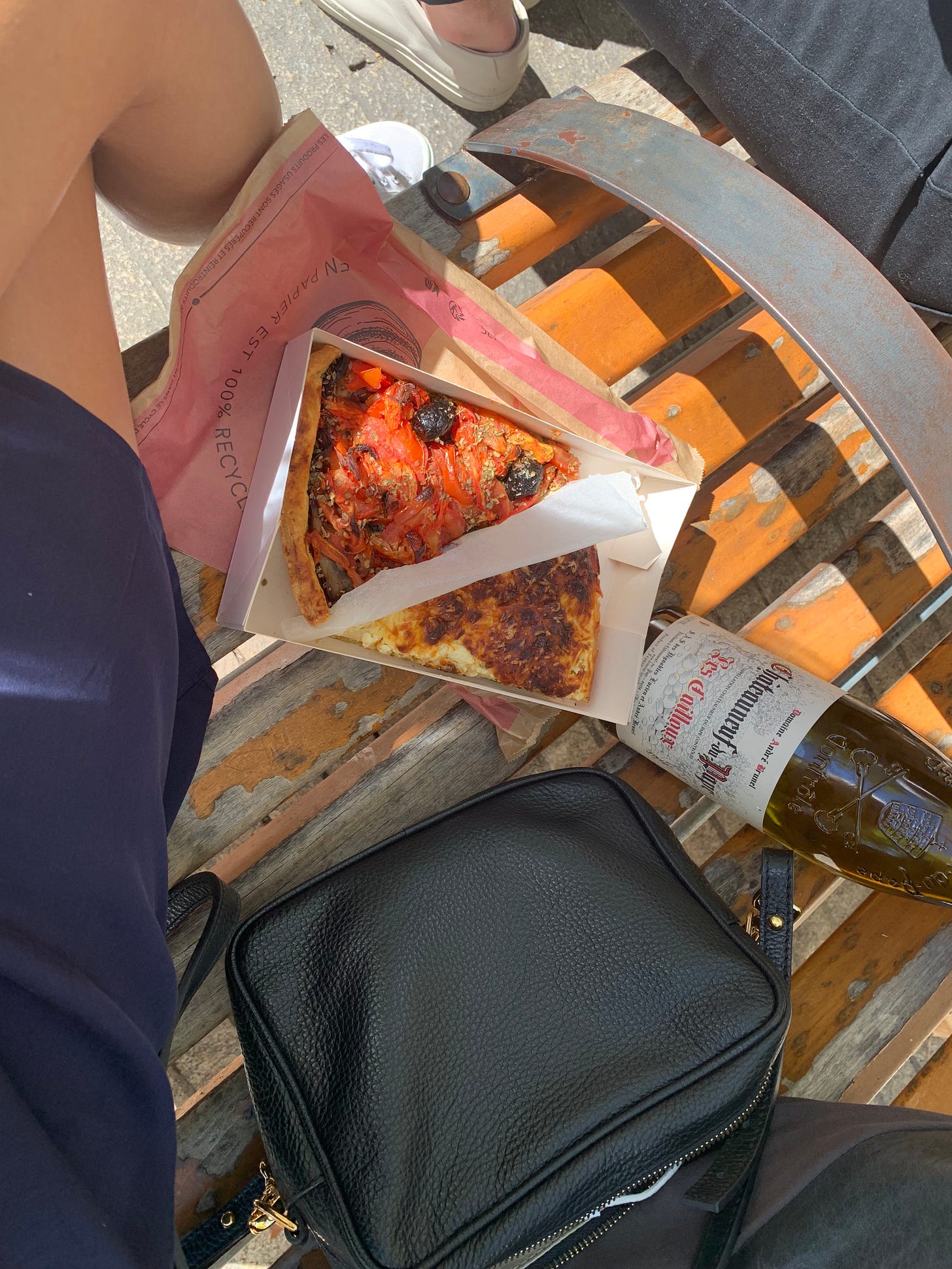

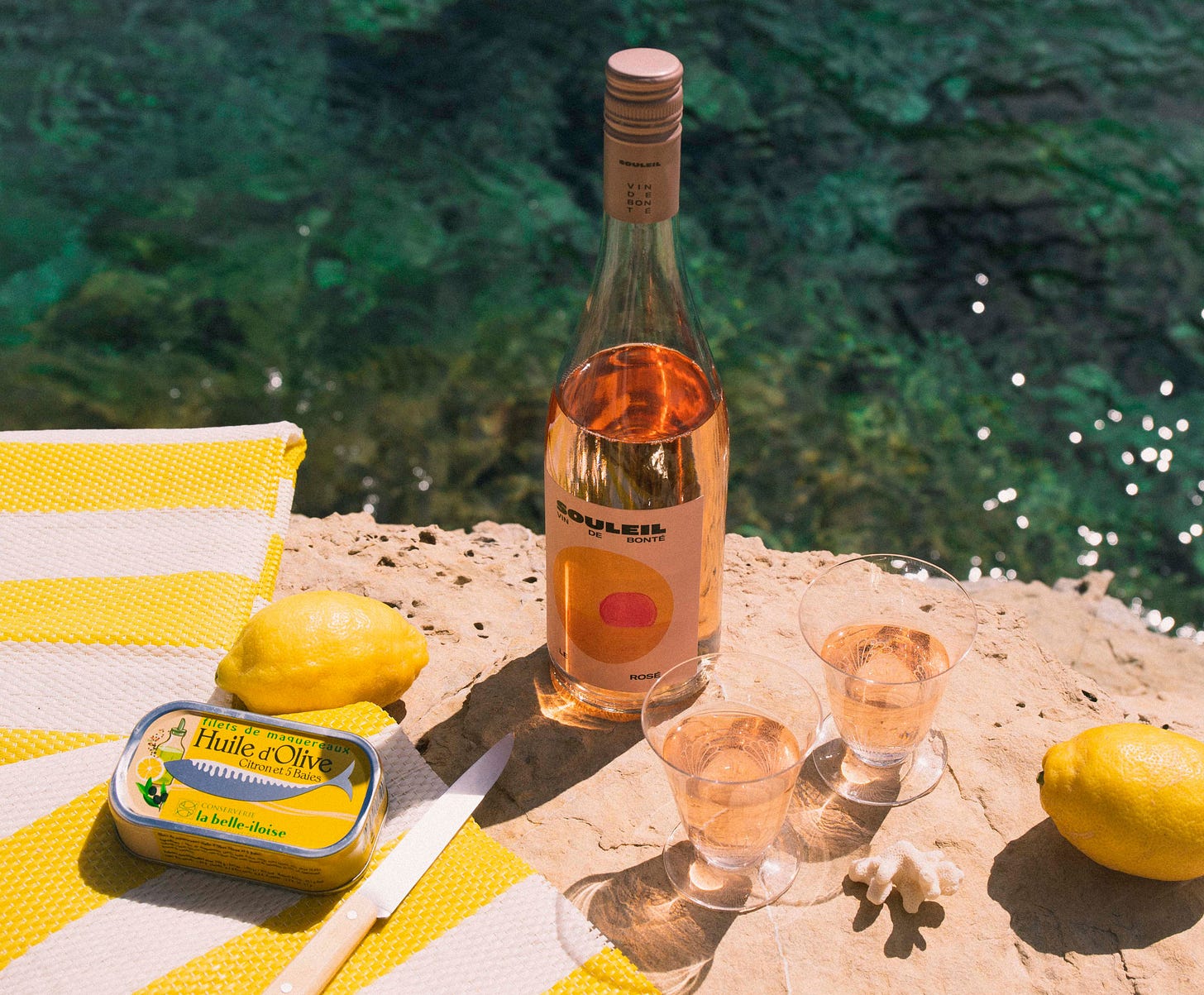
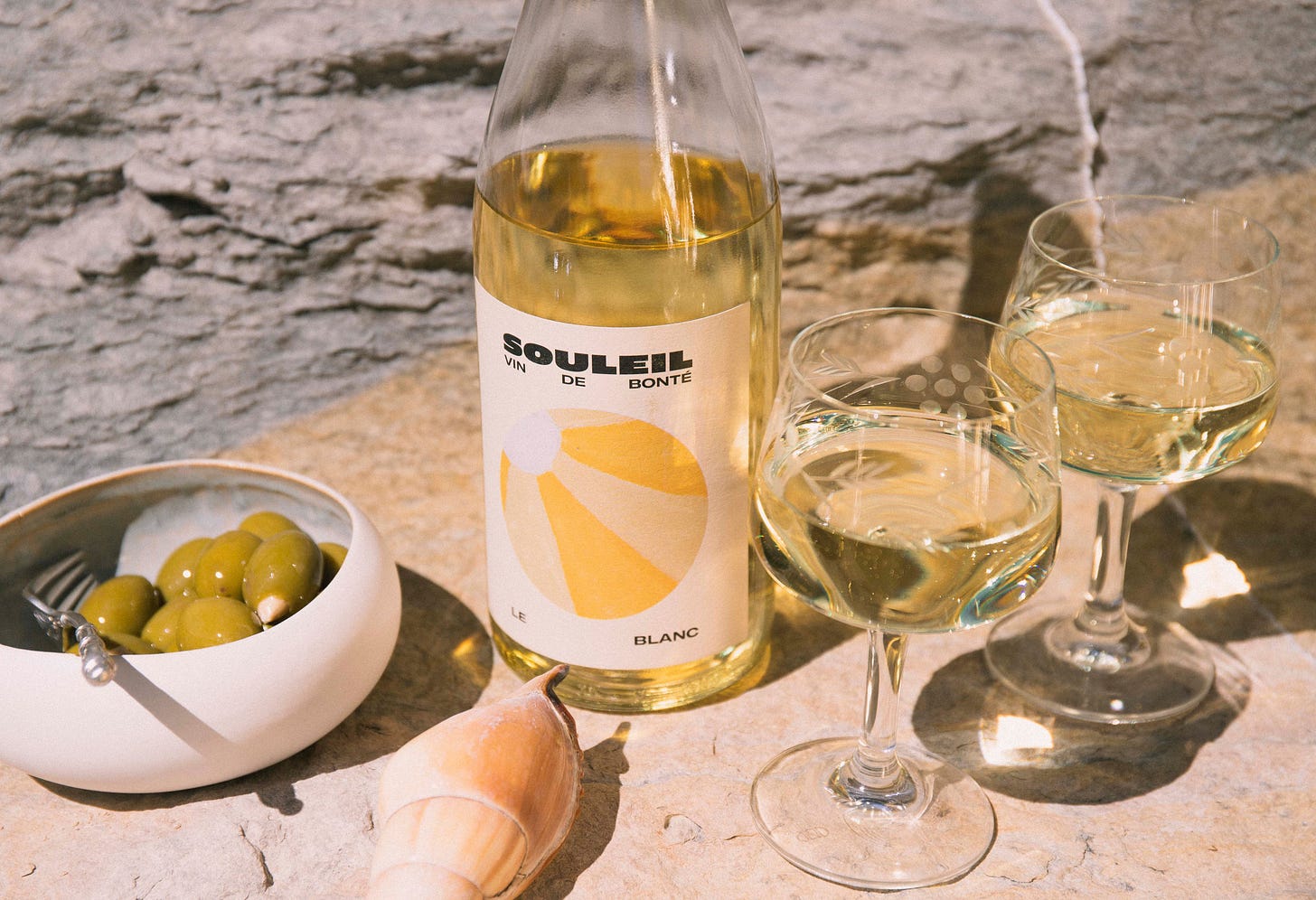
This walk sounds INCREDIBLE! Where did you get the maps for the route you walked - when you arrived? Or pre-trip for planning?
Always lovely to hear about your peregrinations, dear Rebecca. You are such a handsome couple; I wish you both endless happiness. Pam Baker